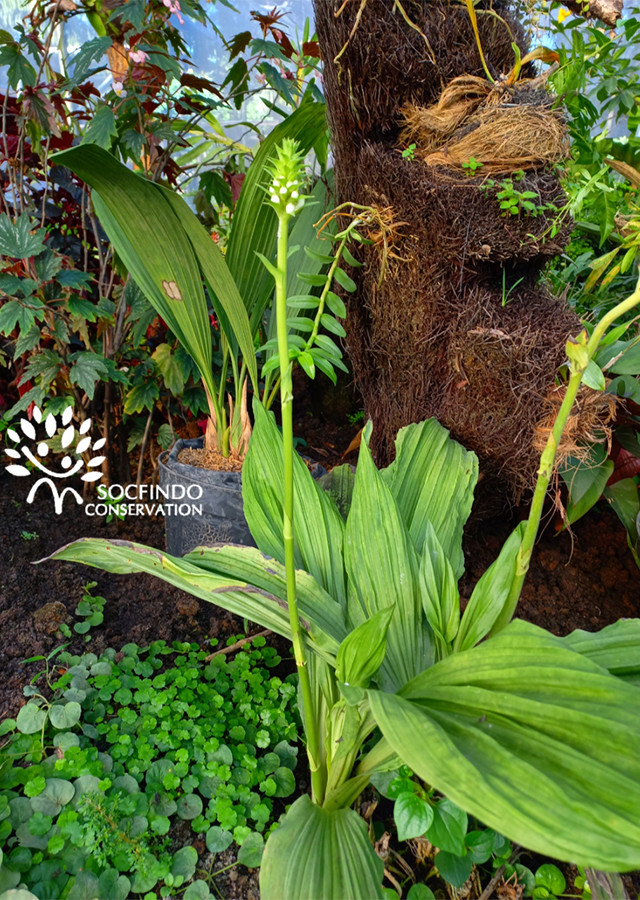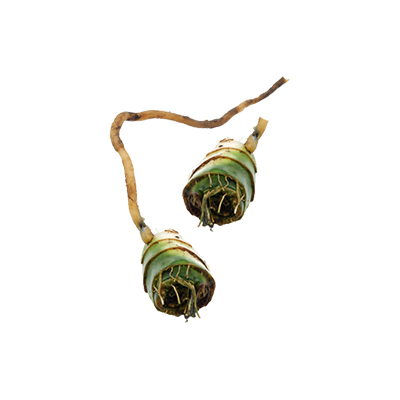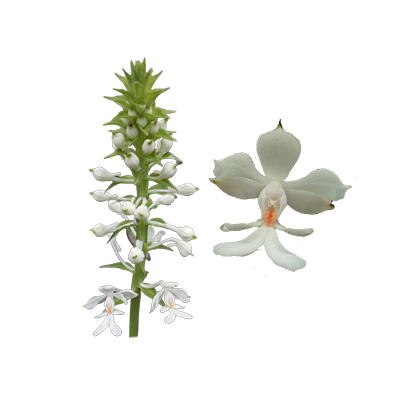Christmas Orchid
Calanthe triplicata (Willemet) Ames
Orchidaceae
Location in our garden
Green House



Synonym
Alismorkis veratrifolia Kuntze
Amblyglottis veratrifolia Blume
Bletia quadrifida Hook.f.
Habitus
Orchid. A low growing evergreen perennial terrestrial orchid, growing 1-1.5 m tall.
Part Used
Flowers
Roots
Pseudobulb
Growing Requirements
Need Shade
Habitat
Riverbanks
Forest
Mountains
Overview
Calanthe triplicata is native to tropical and subtropical Asia to Pacific. The genus name Calanthe comes from the Greek words ‘kalos', which means beautiful, and 'anthe', which means flower. The species name 'triplicata' is derived from the Latin prefix 'tris', which means ‘thrice’, and 'plicatus', which means 'folded', in reference to its lobed lip petal or labellum, which looks like it was folded three times to achieve its four lobes. Native populations in Australia bloom from October to February - over the Christmas holidays - hence its common name. In addition to its ornamental value, the Christmas Orchid also has medicinal uses.
Vernacular Names
No found data on this. Need further research.
Agroecology
This warm to cool growing terrestrial orchid can be found in humid rainforests, in the crevasses of karst limestone, at elevations of 500 to 1,500 metres. Usually grows in the more open areas in upland and mountain rain forest particularly in rocky situations. Requires well drained but moist soils rich in organic matter and well mulched. Will withstand direct sun but prefers shade. Best in pots indoors, planted in orchid compost.
Morphology
- Leaves - lanceolate, thin dark green, ribbed leaves, borne on a pseudobulb at ground level and then enlarging. Leaf blades about 25-90 x 6-11.5 cm, gradually tapering to the sheathing base. Venation longitudinal and parallel with about 6-9 veins more prominent than the rest.
- Flowers - produced in erect racemes about 30-150 cm long, four-lobed lip petal. Flowers about 15-40 mm in diameter. Pedicels about 40-45 mm long. Tepals 5 about 18 x 9 mm, apices acute. Labellum about 15 x 23 mm.
- Fruit - capsules obovoid to cylindrical, about 4 cm long, splitting longitudinally but remaining intact at the base and the apex.
- Seeds - very small, winged, embryo cream.
Cultivation
Vegetative propagation is by division of pseudobulb.
Chemical Constituents
Phenol, tannins, alkaloids, terpenoids, flavonoids, and glycosides.
Traditional Medicinal Uses
- In Taiwan, herbalists use the roots to treat rheumatism, backache and traumatic injuries including fractures.
- In India, the root extract is used to treat diarrhoea and toothache. The herbs are reported to be used in diseases of stomach and intestine; and the root is chewed along with betel nuts or other aromatic substances, in diarrhoea.
Part Used
Reference Sources
- CSIRO. (2020). Australian Tropical Rainforest Plants: Calanthe triplicata (Willemet) Ames. https://apps.lucidcentral.org/rainforest/text/entities/calanthe_triplicata.htm. 24-12-2021.
- Gardens By The Bay. (No date). Christmas Orchid (Calanthe triplicata). https://www.gardensbythebay.com.sg/en/learn-with-us/explore-resources/whats-blooming/christmas-orchid-calanthe-triplicata.html. 24-12-2021.
- Gardens Online. (2021). Calanthe triplicata. https://www.gardensonline.com.au/GardenShed/PlantFinder/Show_1197.aspx. 24-12-2021.
- Kew Royal Botanic Gardens. (No date). Plants Of The World Online: Calanthe triplicata (Willemet) Ames. https://powo.science.kew.org/taxon/urn:lsid:ipni.org:names:621074-1. 24-12-2021.
- Mythili, K., Reddy, C.U., Chamundeeswari, D., and Manna, P.K. (2014). Determination of total phenol, alkaloid, flavonoid and tannin in different extracts of Calanthe triplicata. RESEARCH AND REVIEWS: JOURNAL OF PHARMACOGNSOY AND PHYTOCHEMISTRY, 2(2): 40-44.


